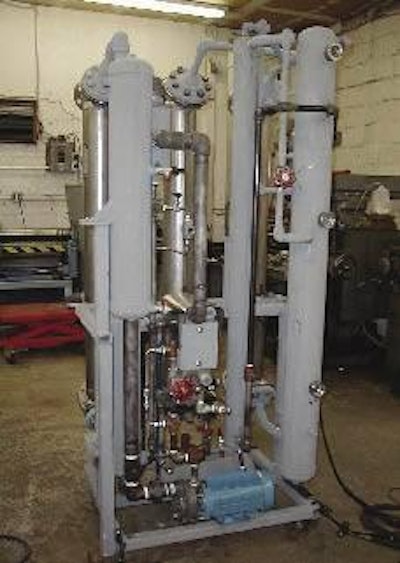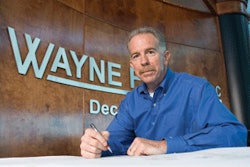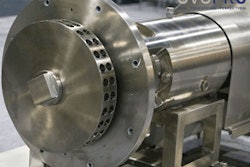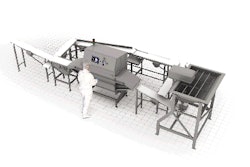
Poultry processing plants require a continuous supply of hot water for scalding of birds and a continuous supply of cold water for chilling where this is the chosen chilling method. Gas-fired water heaters or boilers are used to supply hot water, while electrical refrigeration systems are used to provide the cold water. The cost of energy consumed by these devices is becoming an ever more important concern to processors.
Heat-exchange pumps are devices that pump heat from a lower temperature to a higher temperature. In effect, they produce cooling and heating at the same time. Electric types are popular in heating and air conditioning applications. Only heating or cooling effect is used at a given time, however, because the temperature lift is not sufficient for both effects to be useful. Electric heat pumps have an inherent disadvantage as heating devices when competing with inexpensive burners using cheap primary fuels.
Thermosorber is an improved design of heat-exchange pump developed by Energy Concepts Company in Annapolis, Maryland, USA, with finding support from the US Department of Energy. It is driven by thermal energy and is capable of producing high temperatures required in commercial water heating, while co-producing substantial cooling effect. It can produce hot water at 140°C and cold water at 35°C, closely matching the scalding and chilling temperatures at poultry plants.
The new pump operates on the ammonia absorption cycle. A solution of ammonia in water is pumped under high pressure and heated to generate ammonia gas. The gas is condensed and expanded to low pressure to produce a cooling effect. Ammonia is then absorbed to produce the low-pressure solution, and the cycle is repeated. The heat rejected in the condenser and the absorber provides the heating effect.
This cycle has the potential to produce 60 units of cooling and 160 units of heating for every 100 units of heat input. The electrical energy input is less than compressor-based refrigeration cycles: the new pump has the potential to produce the same heating and cooling effects as conventional technology but using 33% less thermal energy and 80% less thermal energy.
When both heating and cooling effects are fully utilised, this appliance has what is arguably the highest prime energy efficiency of any equivalent.
California Energy Commission sponsored the installation of a 10-ton Thermosorber at the Modesto plant of Squab Producers of California, in order to demonstrate the energy-saving potential of the equipment at a poultry processing plant. The pump provides base hot water for scalding and cold water for chilling. It is not possible to have complete and independent control over flow rates and temperatures because the two halves' of the process are interdependent. As a result, the temperature control in the scalder is achieved by steam addition, and in the chiller with ice. Hot and cold water provided by the pump replaces city water at ambient temperature, producing substantial utility savings. The performance of the installation has been monitored over 6 months. There has been a 68.3% saving in electricity and 27.7% in thermal energy, compared to a conventional system.
The 10-ton system has been so successful that a 100-ton unit has since been installed at a large poultry processing plant in California.
The recent rises in energy costs will encourage processors to look further into this new technology in the future.



.jpg?auto=format%2Ccompress&fit=crop&h=167&q=70&w=250)











